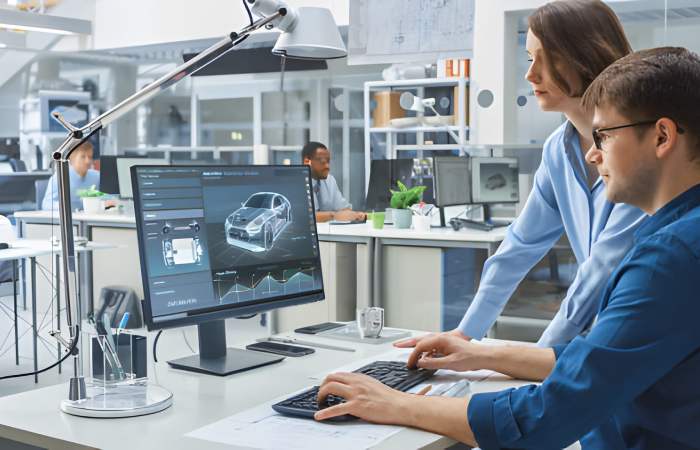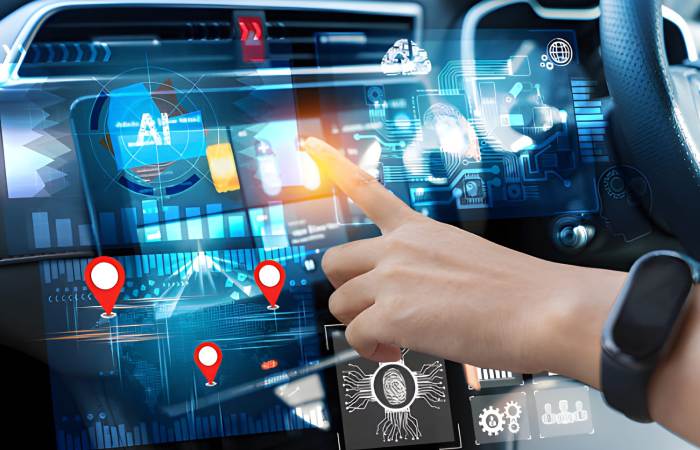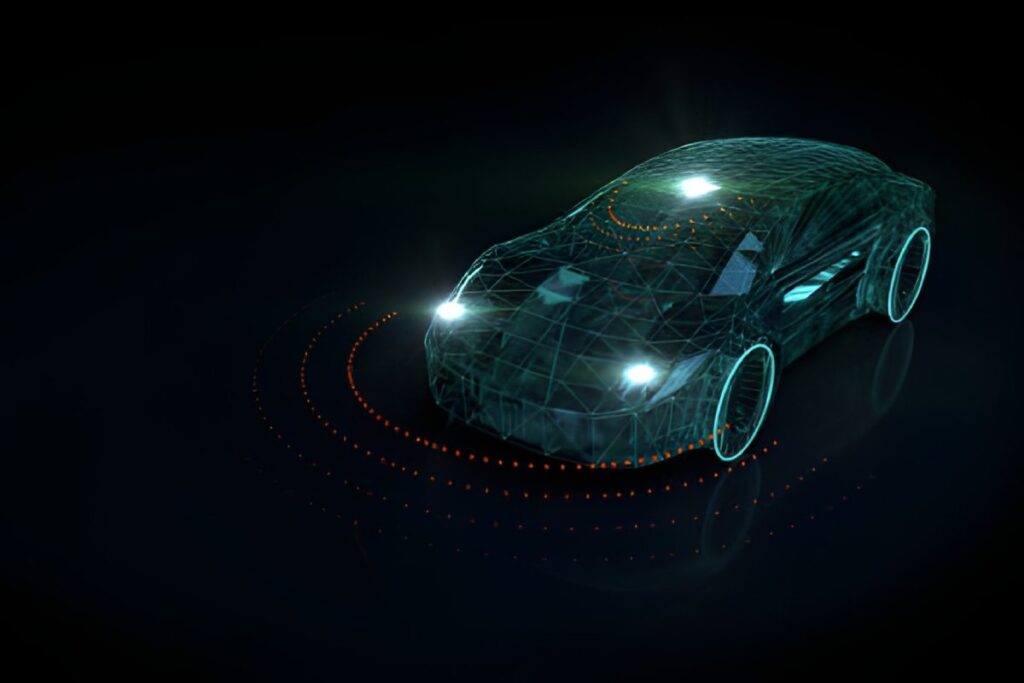Have you ever considered innovations that could change our lives in the next 10 years?
Technology is proceeding at lightning speed, and the next decade will bring advancements that could transform how we live, work, and interact with the world. Here are 17 of the most important Technological Breakthroughs to look forward to and how they could impact your life.
Top 17 Biggest Technological Breakthroughs in the Next Decade
1. Artificial Intelligence (AI) Expansion
AI will drive astonishing advances in healthcare, finance, and transportation sectors. For example, AI-powered self-driving cars could reduce traffic accidents by making travel safer and more efficient. As AI continues to improve decision-making and optimize actions, we can look forward to a future of innovation and improvement in everyday life.
According to a report by Grand View Research (Source), the global AI market is expected to reach $1.8 trillion by 2030.
2. Autonomous Vehicles
Self-driving cars and robotaxis are predictable to developed a reality, making travel safer and more effectual. Imagine attractive a nap or catching up on work while your car drives. Businesses like Tesla, Waymo, and Cruise are leading the way, and governments are building the infrastructure to support these vehicles.
According to Sonatus Software, a provider of automotive software, 10% of all vehicles on the road will be self-driving by 2030.
3. Quantum Computing

Quantum computers will provide unimaginable computing power, allowing them to solve problems even the fastest modern computers cannot handle. This could revolutionize drug development, secure communications, and climate modeling. For example, quantum computing could help develop more advanced materials for various applications, from batteries to aircraft.
The quantum computing market could exceed $125 billion by 2030 (Source).
4. Clean Energy Innovations
Imagine a world powered by clean, unlimited energy. Nuclear fusion, which mimics solar energy production, is becoming increasingly common. At the same time, progressive solar technologies like perovskite cells promise to brand renewable energy cheaper and more efficient.
The first commercial fusion reactors will be operational in the 2030s (Source).
5. Genetic Engineering and Biotechnology
Advances in genetic technologies like CRISPR are opening the door to treatments for previously incurable diseases. Imagine curing genetic disorders or enhancing human traits, such as resistance to certain diseases. Personalized medicine will become increasingly common, tailoring treatments to your unique DNA.
6. Advanced Battery Technologies
Battery technology will make huge strides, allowing electric vehicles to portable further on a single charge and renewable energy sources to store energy more efficiently. Safer and more efficient solid-state batteries could replace existing lithium-ion batteries.
Electric vehicle adoption is expected to grow, with more than 60% of new cars expected to be electric by 2030 (source).
7. 3D Printing Revolution
3D printing is on the edge of moving from hobbyist use to mass production. Various industries already use 3D printing to create everything from aircraft parts to medical implants. Developing 3D-printed organs for transplants and custom-made consumer goods may even be possible.
NASA is testing 3D printing to build habitable habitats on the Moon and Mars.
8. Augmented Reality (AR) Integration

Augmented reality (AR) is flattering a part of everyday life, allowing us to interact with digital content in the real world. The possibilities are endless, from purchasing furniture and assessing its suitability for our interiors to training surgeons to use AR.
The AR market is expected to cultivate to $88 billion by 2030 (Source).
9. Space Exploration Technologies
Space is attractive more accessible than ever. Private corporations like SpaceX and Blue Origin are lowering the cost of space travel, paving the way for lunar bases, Martian colonies, and asteroid mining. This could open the door to resources and opportunities beyond Earth.
NASA plans to land cosmonauts on Mars by the late 2030s, with private missions expected to begin even earlier (Source).
10. Reconfigurable Intelligent Surfaces (RIS)
Reconfigurable intelligent surfaces (RIS) could revolutionize wireless communications in the next decade. RIS uses advanced materials to manipulate electromagnetic waves, improving network coverage, speed, and energy efficiency. For example, as 5G and 6G networks develop,
RIS could provide faster and more reliable internet, even in areas with poor connectivity. This technology will also meet the mounting demand for IoT devices and high-speed communications, making it a key player in future networks. (Source)
11. Brain-Computer Interfaces (BCIs)
Brain-computer interfaces (BCIs) directly connect the brain and devices, allowing people to control computers or prosthetics with their thoughts.
For example, BCIs could allow people to seamlessly interact with virtual or augmented reality, opening up new possibilities in entertainment and rehabilitation. BCIs will grow rapidly and become a multi-billion-dollar industry by 2030 thanks to neurotechnology and machine learning advances. (Basis)
12. Decentralized Finance (DeFi)
Decentralized finance (DeFi) usages blockchain technology to create fiscal systems without banks or intermediaries. It directly enables lending, borrowing, trading, and collateralization through decentralized platforms.
For example, you can earn interest by lending money in a DeFi app without going through a old-style bank. DeFi is probable to grow rapidly, making financial services more inclusive, transparent, and efficient, potentially changing how we manage cash. (Basis)
13. Digital Twins
Digital twins are virtual copies of physical systems or products that simulate, analyze, and optimize performance. For example, a factory’s digital twin can monitor equipment in real time, predict maintenance needs, and improve efficiency.
As IoT devices become more widespread, digital twins will help industries such as manufacturing, healthcare, and urban planning reduce costs and solve complex problems. This technology is predictable to be widely adopted across many sectors by 2030. (Source)
14. Spatial Computing
Spatial computing merges the corporeal and digital worlds, letting users to interact with digital content in three-dimensional space.
For example, architects can use amplified reality (AR) to imagine building designs on-site before construction begins, making real-time adjustments.
As hardware and software advance, spatial computing transforms sectors such as education, healthcare, and entertainment, becoming a key technology in the next decade. (Source)
15. Wearable Health Technology
Wearable medical technologies include devices that monitor health indicators such as heart rate, blood pressure, and glucose levels in real time. For example, smartwatches can alert users to irregular heartbeats, helping to detect circumstances like atrial fibrillation early.
As technology loans, these devices will provide more accurate data, enable remote patient monitoring, and personalize medical care, making healthcare more accessible and effective in the next decade.
16. Smart Materials
Innovative materials can change their properties depending on temperature or pressure. For example, bright fabrics can adapt to body temperature, keeping people cool or warm as needed. These materials can also be used to create buildings with climate-adaptable insulation.
They are expected to transform the construction, healthcare, and aerospace industries in the next decade, offering more efficient and flexible solutions.
17. Nanotechnology
Nanotechnology manipulates matter at the nuclear level, creating materials with unique properties. For example, in construction, nanotechnology enables the creation of sturdier, lighter, and more durable materials, such as self-cleaning glass or crack-resistant concrete. By 2030, this technology is predictable to transform electronics, energy, and construction industries, spurring innovation and increased efficiency.
A Look Ahead
These advances promise to revolutionize our way of life but also raise important questions. How can we ensure responsible use of these technologies? What challenges will they pose for employment, privacy, and society? As we navigate this exciting future, we must balance innovation and responsibility.
Are you ready to embrace these incredible changes? The next decade will bring unprecedented challenges and opportunities, and be a fantastic journey!

